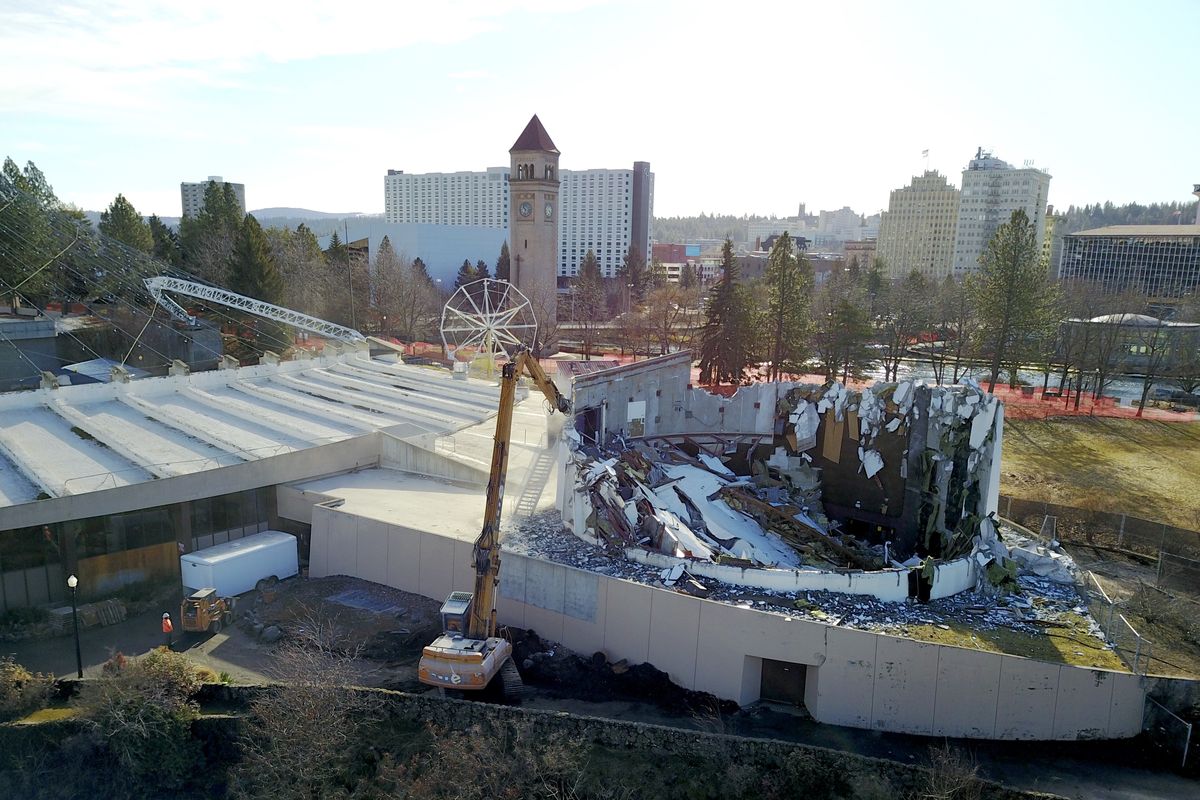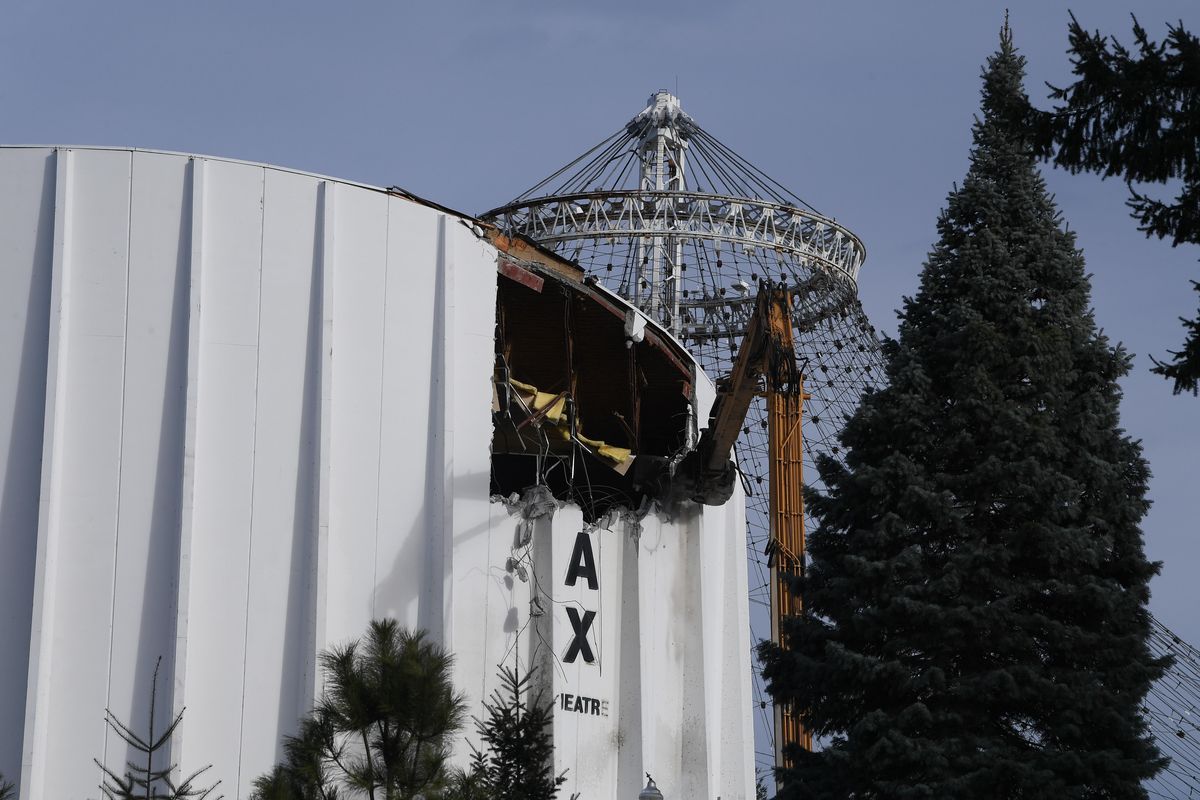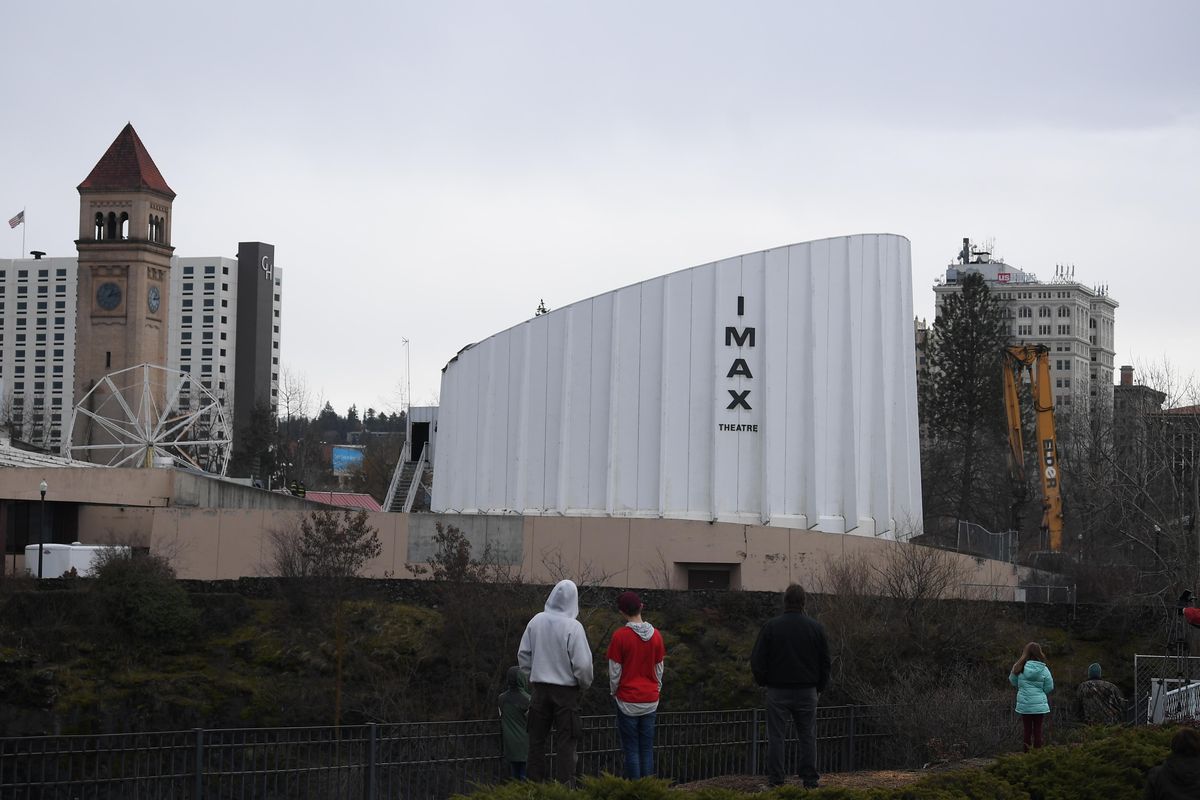Riverfront Park Imax demolition ‘like a big dinosaur eating the building’
Demolition of the IMAX theater in Riverfront Park begins on Monday, Jan. 29, 2018, in Spokane, Wash. Tyler Tjomsland/THE SPOKESMAN-REVIEW (Tyler Tjomsland / The Spokesman-Review)Buy a print of this photo
The giant, mechanical jaw of a yellow excavator went right for the “I” in “IMAX” Monday afternoon, marking the start of a slow death for the 40-year-old theater in Spokane’s Riverfront Park.
The demolition began shortly before 2 p.m., a little later than expected, and people gathered to watch the machine crunch its way through the theater’s concrete walls and knock off the black letters that spelled “IMAX” on its south-facing side.
The jaw resembled a massive bolt cutter and was affixed to the end of a crane, and it slowly yet nimbly chewed through the top edge of the cylindrical building, like a can opener.
“It looks like a big dinosaur eating the building,” remarked Tom Versteeg, who stopped near the park’s new ice-skating ribbon to watch the demolition with his wife, Lynette.
After half an hour, the theater’s slanted roof plummeted to the ground, disappearing within its white walls and producing a rumble that could be heard throughout the park.
Kay Bryant was dismayed by the project and drove from Spokane Valley just to say goodbye to the theater, where she has taken all six of her grandchildren as part of a Christmastime tradition.
“I wanted to see it one last time,” Bryant said. “It was an awesome place, and kids loved it particularly.”
The demolition is expected to take most of the week, and the theater will not be replaced. Instead there will be an open space, called a “central meadow,” between the U.S. Pavilion and the paved Howard Street promenade that runs through the park.
Films were played on a big screen in the covered Pavilion during Expo ’74, but the Imax building didn’t open until four years later.
The decision to tear it down came in September 2016, but the theater’s fate was in the works for years. A master plan for the park’s redevelopment, agreed to in 2014, called for closing the Imax because of declining revenues. The demolition was moved up by more than a month because the necessary equipment was in place from separate work on the roof of the pavilion ice rink.
The theater reached peak attendance with 106,000 visitors in 2005, but its revenues plummeted after the opening of an Imax screen at the AMC cinema in nearby River Park Square and the loss of licensing to show big-budget Hollywood films in 2009.
In 2012, the theater lost $342,000, and just 36,500 people attended its movies.
Snapping pictures from her vantage point at the ice ribbon, Bryant said the Imax building was more than just a theater.
“This was a destination,” she said, sounding nostalgic. “The whole experience was different.”
Then she gazed across the river, watching the mechanical jaw rip a hole in the building, and let out a sigh.
“Time marches on, doesn’t it?”









